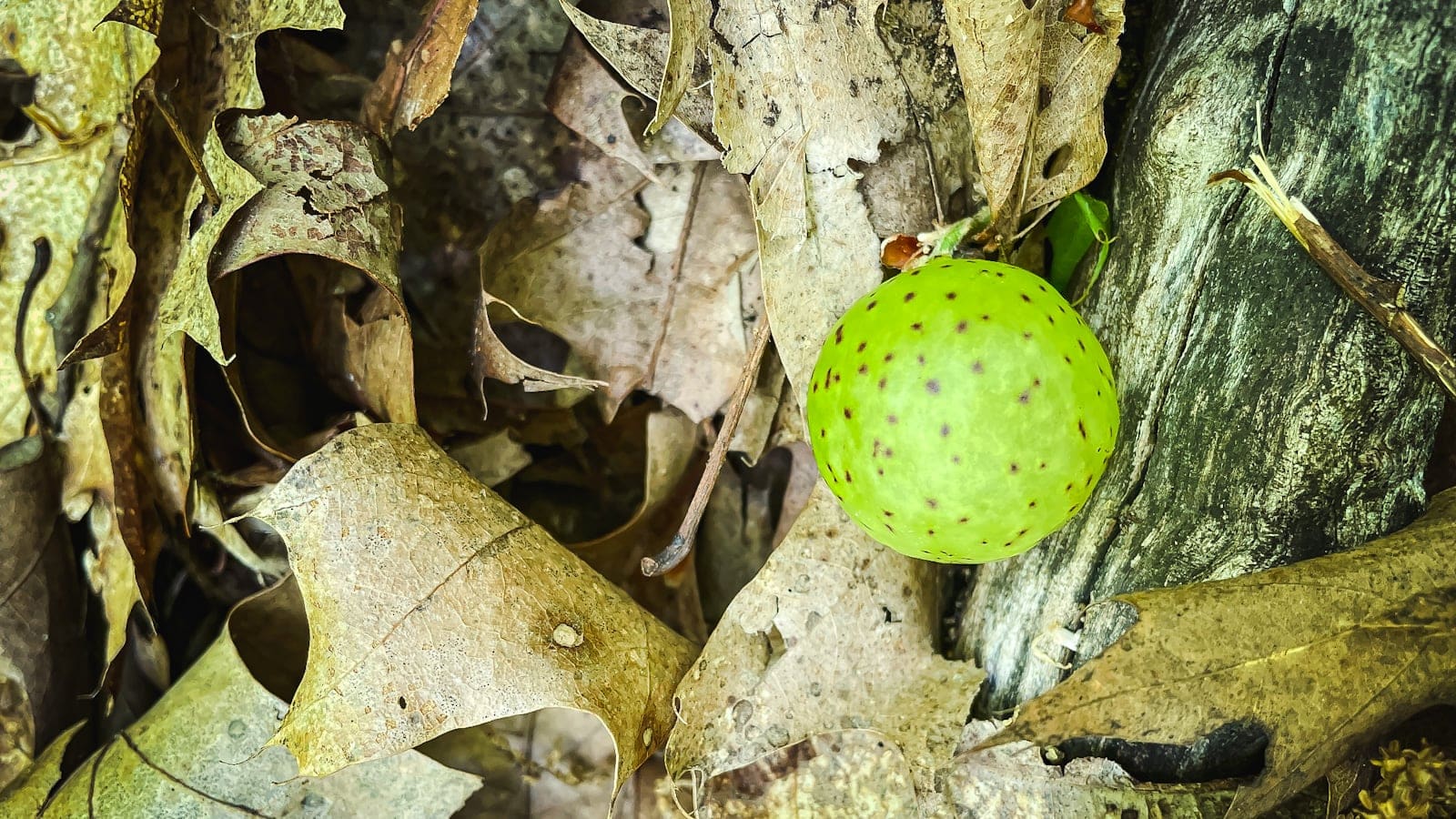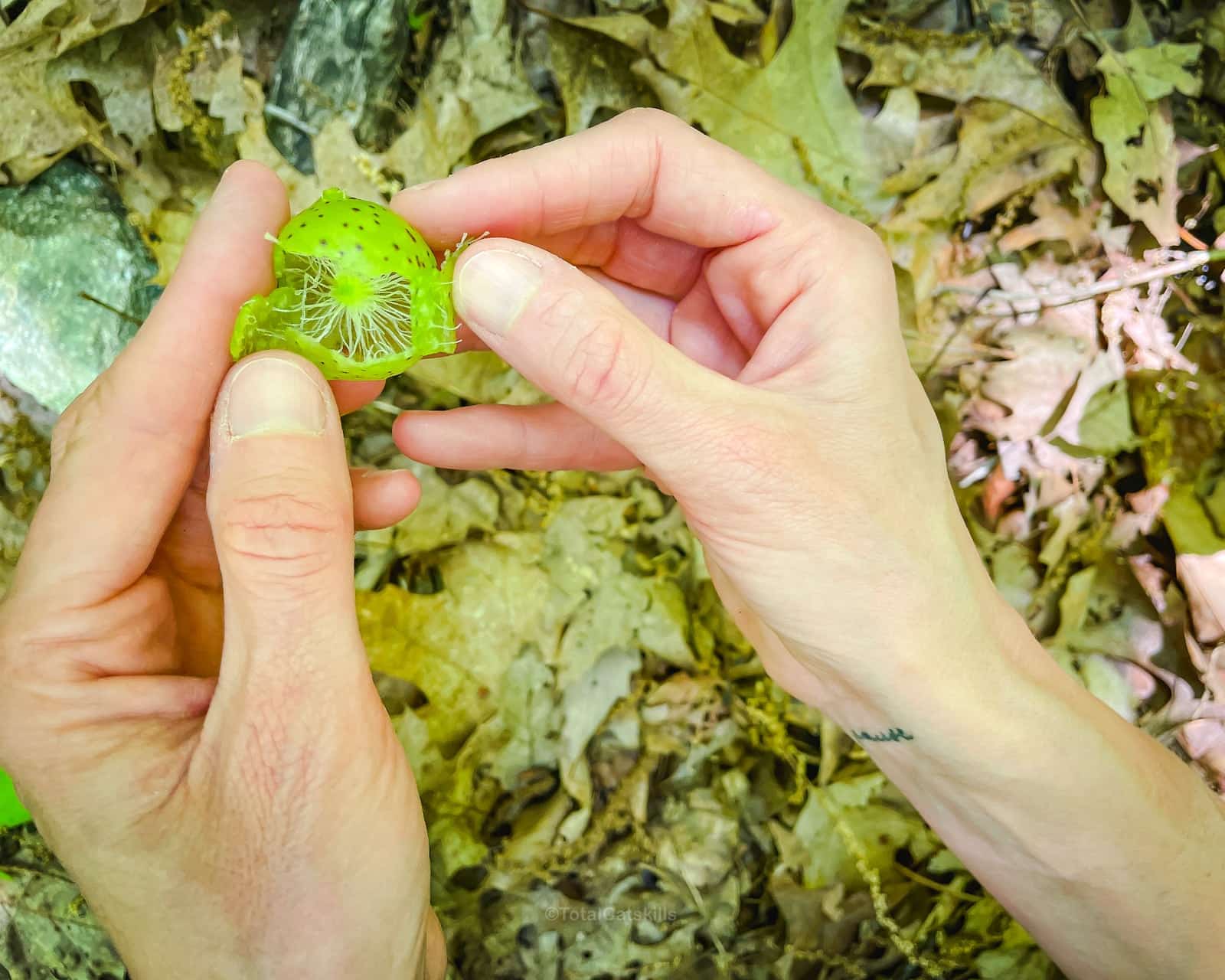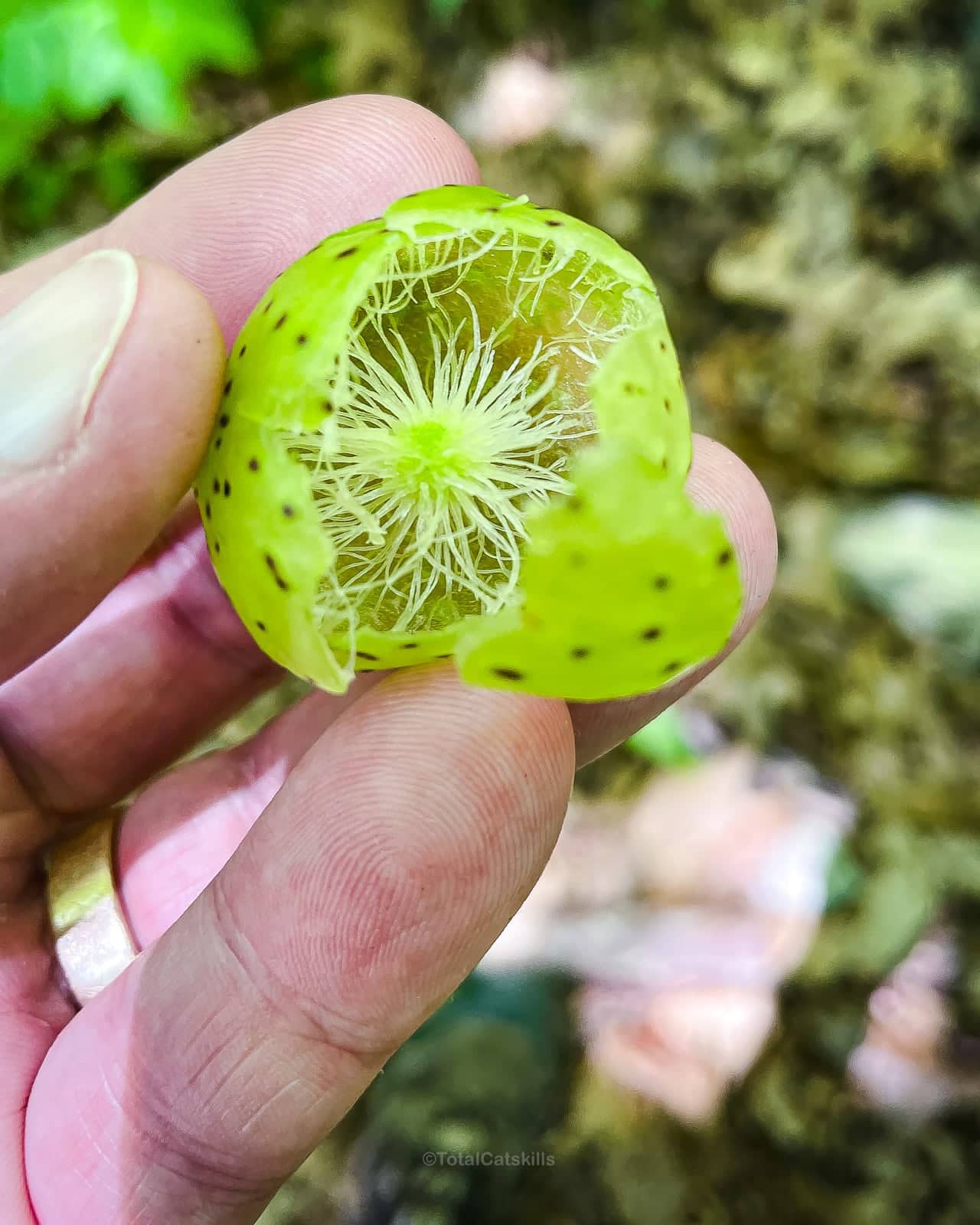Disclosure: This content may contain affiliate links. Read my disclosure policy.
Let’s unpack the mysteries of gall wasps and their unique galls — especially the creepy beautiful oak apple!
As a hiker, you might sometimes come across peculiar growths on plants during your explorations. You may see them hanging from a twig, but they’re most noticeable after they drop to the forest floor. These strange growths, called galls, are the handiwork of the little-known gall wasp.
Lace up your hiking boots, grab your walking stick, and let’s uncover the fascinating life cycle of the gall wasp and their weird galls.
Oak Apple Galls: A Unique Formation by Gall Wasps
Oak apple galls, also known as oak apples, are one of the most intriguing types of galls created by gall wasps. These galls are generally round, ranging in size from 1 to 4 inches in diameter, and they resemble small apples. They’re primarily formed on oak trees by various species of gall wasps like Amphibolips confluenta and Biorhiza pallida.
The outer surface of an oak apple gall is typically smooth or slightly wrinkled, with a green or reddish color that may change to a brownish hue as the gall matures.

Inside the gall, there is a complex network of fibrous tissue, with a small central chamber housing the developing gall wasp larva.

When the female gall wasp lays her eggs in the oak tree’s tissues, she injects chemicals that stimulate the growth of the gall. As the larva feeds on the gall tissue and grows, the gall enlarges, providing the larva with ample space and nutrition for its development.

Once the larva has fully developed, it will either pupate within the gall or overwinter as a larva before emerging as an adult gall wasp in the following spring or early summer.
BTW, you might also enjoy…
- ADK › Whiteface Mountain via Marble Mountain
- DANGER › 6 Feet Under? How Our Adirondack Hike Turned Deadly Serious (Substack)
- ADK › Hurricane Mountain Fire Tower
- CATSKILLS › Catskills Fire Tower Challenge 2025
- Follow › My Instagram @TotalCatskills
- Follow › My writing for Times Union
David Attenborough’s Gall Wasp Video
In this absolutely fantastic clip from a 2005 episode of the BBC’s Life in the Undergrowth, David Attenborough reveals the entire life cycle of oak tree gall wasps (with a hardcore twist at the end)…
The Wonderful World of Gall Wasps (Cynipidae)
Gall wasps, which belong to the family Cynipidae, are small, inconspicuous insects, often no larger than a grain of rice. They come in various shades of brown, black, or metallic colors and may be difficult to spot with the naked eye. There are over 1300 species of gall wasps worldwide, with nearly 800 species found in North America.
The Intriguing Life Cycle of Gall Wasps
Depending on the species, the life cycle of gall wasps can be either sexual or asexual. Some gall wasps even exhibit an alternating sexual and asexual generation pattern, which is known as the alternation of generations.
A. Sexual Generation
During the sexual generation, female gall wasps emerge from their galls and mate with males. After mating, the females lay their fertilized eggs in the host plant’s tissues, which triggers the formation of galls. The larvae develop inside the galls, eventually emerging as winged adults to continue the cycle.
B. Asexual Generation
In the asexual generation, female gall wasps reproduce parthenogenetically, meaning they lay unfertilized eggs that develop into females without the need for male fertilization. These females lay their eggs in host plants, inducing gall formation just like their sexual counterparts. The larvae develop within the galls, eventually emerging as adult female wasps to lay more eggs and continue the asexual generation.
Get access to hyper-detailed trail guides, insider tips, and expert advice. Join a vibrant community of like-minded hikers, receive exclusive content, and embark on unforgettable outdoor adventures. Whether you’re a seasoned outdoor enthusiast or just starting out on your hiking journey, this website provides invaluable resources to help you explore the best trails in the Catskills, Adirondacks, Hudson Highlands, Berkshires, and beyond. Get access now to all content on this website instantly and enjoy unique supporter benefits.
How Gall Wasps Collab with Plants
Gall wasps have an incredible talent for manipulating their plant hosts to create galls that serve as both nurseries and protection for their developing offspring.
Galls can take on a variety of shapes and sizes, ranging from small bumps to large, intricate formations. Some common galls found in the northeastern United States include oak apple galls, wool sower galls, and bullet galls.
When a female gall wasp lays her eggs inside a plant, she injects chemicals that induce the formation of the gall, literally reprogramming the leaf. As the larvae grow, the gall provides them with food and shelter. It’s an ideal environment for development.
Hatching Timeline of Gall Wasps
Gall wasps typically lay their eggs during spring and early summer, when their host plants are actively growing and producing new tissues. This period is crucial, because the fresh growth provides an ideal environment for the formation of galls and the development of the larvae.
The time it takes for the eggs to hatch varies among species and can range from a few weeks to several months.
In general, gall wasp larvae will develop inside the galls throughout the summer months, and depending on the species, either overwinter as larvae or pupate within the gall during autumn or winter.
The adult gall wasps will then emerge from the galls in the following spring or early summer, ready to do sex stuff and lay eggs to continue their life cycle.
Read More
Oak apple galls are an incredible example of the intricate relationship between gall wasps and their host plants. As a hiker, spotting these unique formations can be a delightful addition to your next nature walk or super-challenging hike.
Get full access…
Get instant access to the full version of this site and enjoy great supporter benefits: full galleries, full trail notes, early access to the latest content, and more.
Hot on the website right now…
Follow for more…
Follow my @TotalCatskills content on Instagram for regular hiking inspo and safe, inclusive community.
